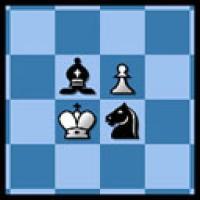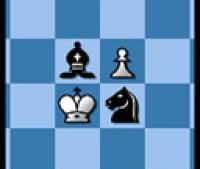
Book Review: Winning Chess Openings
With Winning Chess Openings, Yasser Seirawan’s writing style has much improved. In a previous article I mentioned that his pros are often a bit on the goofy side. This time around the syrup has taken a backseat to irreverence. Nay, even sarcasm at times. This is a Good Thing considering how dry this subject could be. Instead, Seirawan leads us through the maze of opening theory with a bit of humour to to egg us on.
Seirawan has decided that he will take us, his students, on the same journey that he took when he learned about chess openings, and I mean that quite literally. He begins by describing his earliest memories of chess, including his very first game in which he really had no idea how to start a game of chess. He then recounts his infatuation with Rook openings and on to his use of Queen raids against his opponents. He proceeds thusly in part to make us more comfortable while ramping us up towards beginning opening theory.
Of course, I have no idea if his early history matches what Seirawan has written down, but it’s amusing, compelling and effective, so I’m not complaining. I don’t think you will either.
I’ll interject here and say that Seirawan has updated the graphics for this book. Images depicting board positions use the Modern piece style as opposed the the old Book piece style used in his earlier books. A minor difference to be sure, but one that I appreciate.
After the comic recounting of his earliest chess debacles, Seirawan gets down to business with basic opening principals. This section is fairly brief, mostly covering things you should already know if you have read the first book in this series, Play Winning Chess. However, the information in this text is more compact so it’s not really a good substitute for the treatment of openings found in books geared towards absolute beginners. Seirawan also here first mentions the players and books that inspired him during his formative chess years.
Having the formalities out of the way, Seirawan dives into the meat and potatoes of openings, beginning with the classical openings, both Queen Pawn Openings and King Pawn Openings. Both attacks and defenses are covered and all the classic openings you’ve probably seen mentioned elsewhere in your studies are offered up for your consumption.
The text next attacks the so-called modern openings, and again covers both attacks and defenses. Also again, many of the names you will most likely recognize.
By this point in the book you will have learned just how complicated this whole opening mess can be. There is much to be memorized, but there is also logic behind the openings about which Seirawan does a good job imparting. Despite the myriad variations explained, the author will often say something like, “There are entire tomes dedicated to this opening, and I suggest you research them!” Yeah, right, Yasser, I’ll get right on that. Maybe in a few years after I’ve dealt satisfactorily with Winning Chess Openings.
Anyhoo, the last major section of this book is dedicated to what Seirawan calls “Solutions” to the openings. I know what you are thinking. You are pondering the notion of skipping straight to this “Solutions” section and ignoring the rest of the book. I, however, advise against that strategy. While it’s true that the solutions section is very interesting in and of itself, and by working through it you will indeed gain much knowledge of useful openings, you would be missing much of the groundwork that would make these solutions intelligible. As I mentioned a little ways back, openings are not just about memorization, they are also about logic and motivation.
In case you are wondering about these opening “solutions,” I let you in on a little secret: They are largely based on the Barcza Opening, and they fall more under the monicker of “systems” than they are about specific orders of moves. What I mean by this is that, in general, you play towards a certain position which defines the opening, but the order of moves to achieve that position are in part determined by the moves made your opponent. The big advantage to this is that there is less to memorize. On the other hand, you better have your wits about you when you play these systems because inaccurate play will likely be your downfall. Trust me on this. It’s bit me on the ass a few times already.
All said and done, I heartily recommend Winning Chess Openings to anyone even slightly interested in the topic. It is will written, well presented, and even entertaining, which is fairly amazing considering how dry this subject could be otherwise. It certainly opened my eyes to a facet of chess about which I was quite naive.
I’m Stick, comin’ atcha wiff ‘ttude. Let’s go kick some kingside ass on the gridiron!






